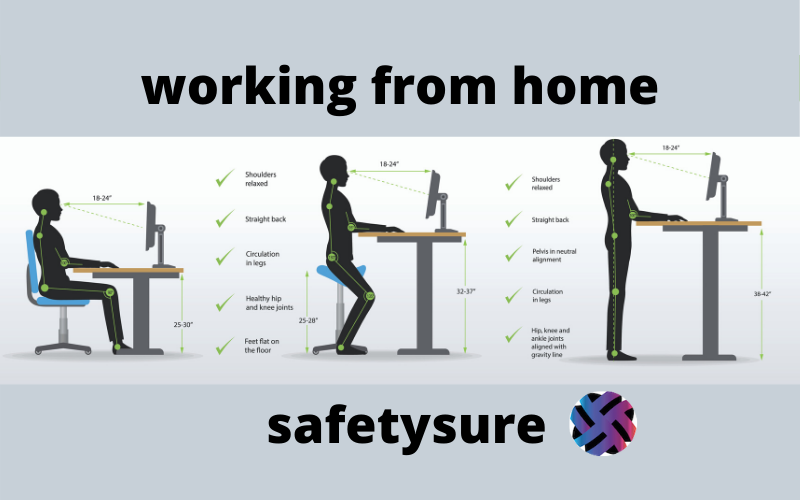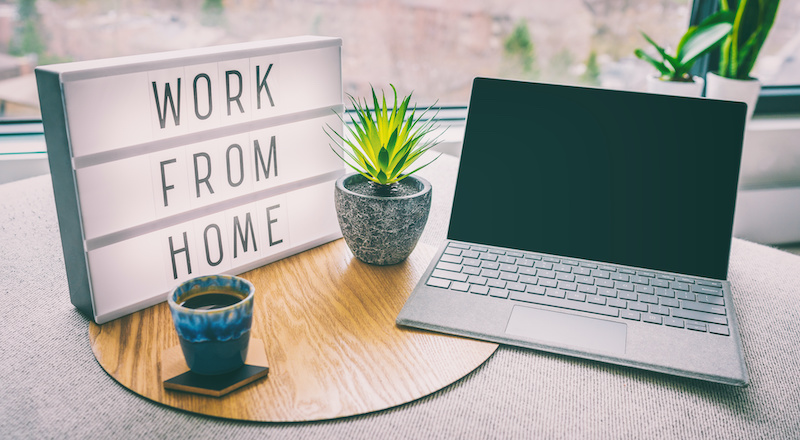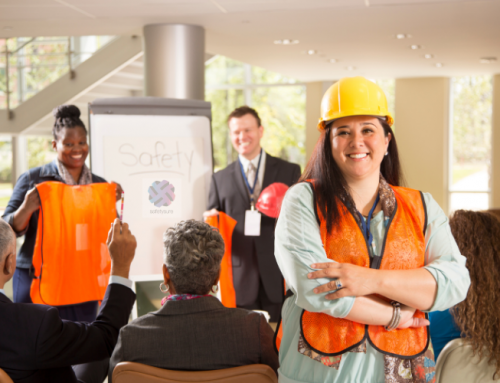Working from home presents itself with many challenges including dealing with distractions that creep into work life. While we take it that our homes are our places of comfort, they also must be a place of safety when it comes to our work.
Over the past month or two, many of us have adapted our working routines to work from home. The principles for safe work at home are not dissimilar to safety at work.
We’ve listed a few tips to improve safety when working from home.
Tip One – Ergonomics
Generally speaking, your kitchen table or bench may not be the best place to work from. A well-constructed office desk, preferable with a sit-stand feature will serve you well if you’re expecting long periods of work at home.
Remember that your home environment should be as comfortable as work so try to ensure that the furniture you purchase will meet applicable standards when it comes to functionality of the design.
Chairs – Make sure you use a comfortable chair that is built to Australian Standards/. AS/NZS 4438 (Height-adjustable swivel chairs) specifies the requirements but in essence, it should be fully adjustable. While there’s nothing to say that you cant use an existing chair from home, it should be fit for purpose and not cause unnecessary discomfort while seated.
Workstations – the kitchen table may not be the best medium to use if you’re working from home but it can serve a purpose if it’s adjusted properly. You should aim to be as relaxed as possible. The image below has some great tips for the workstation and chair setup.

Try to make sure there is adequate leg space under the desk or table and your feet can be flat on the ground. If you need to raise the height of the chair and your feet are no longer flat on the ground – use a stable object that is wide enough to raise your feet.
When seated, ensure your hips are at about 90 to 100 degrees
Your monitor should be (to the top third of the screen – the same height as the eyes)
Ultimately the distance between your eyes and the screen should aim to be around arms reach
The Keyboard should be positioned in front of you at a distance from the edge of the desk/table that feels comfortable
When using the mouse, keep it close to your body.
BTW there’s a standard that applies to workstations as well. Australian Standard AS 3590 -1990 Screen-based workstations, part 2 workstation furniture could be a good starting point to find the best equipment.
Tip two – Your computer
Using a laptop can be challenging at home for long periods as you may find yourself constantly looking down at the screen. In the long term, this may create neck and should pain. Our advice is to set your computer up with a docking station and good quality monitor.
You should also consider purchasing a full-size keyboard and avoid using the mouse or trackpad built into your computer (if it’s a laptop). Buy a separate full-size keyboard and a separate mouse.
By the way – your computer is connected to a power source. You should make sure you have a ‘safety switch’ installed in your home to prevent accidental electric shock from a power source.
Tip three – Keep moving
One of the biggest challenges in working from home is to keep moving. In the work office environment, people tend to move more but at home, it’s easy to fall into the trap of staying sedentary.
Try and have a short break regularly.
There are also a range of apps out there like Stretchly that remind you to take a break
Try these simple tips that will also help you keep moving in your home office:
- stand at every opportunity e.g. read from the kitchen bench rather than sitting at your desk;
- take a water break every hour;
- walk around when you are on your mobile;
- stand up and move around (change your posture) at least once every hour.
Tip Four – Make sure the basic safety considerations are right
You don’t want to fall over a cord, slip on a mat or end up with a psychological injury from your time at home. You definitely don’t want an electrical shock from a faulty powerpoint.
Remembering that the safety basics that you practice in your company office are critically important to you staying safe while working from home.
Some considerations that may affect work safety at home include:
- consideration of any pre-existing injuries that you may have;
- communication frequency and type between the employer and worker;
- management of the work program, workload and activities;
- mental health and wellbeing – try and stay well connected via phone or video conferencing.
- Maintain appropriate light levels for specific tasks.
- Reduce or eliminate glare by using window shades, diffusers on overhead lighting and anti-glare filters for computers.
- Adjust the contrast and brightness on your computer screen to a comfortable level.
- Get a regular eye exam and if necessary, wear corrective lenses. Tell your eye specialist how often you use the computer.
If you’d like some help with a specific safety program to assist your staff to work from home, we’d be happy to help!
We also have a working from home checklist that you can access here.
YOU MIGHT ALSO LIKE TO READ
- Managing chemicals in the workplace
- Health and Safety speakers
- Heat stress an important issue for employers in Queensland(
Call us on 1300 087 888 to find out more.







Leave A Comment